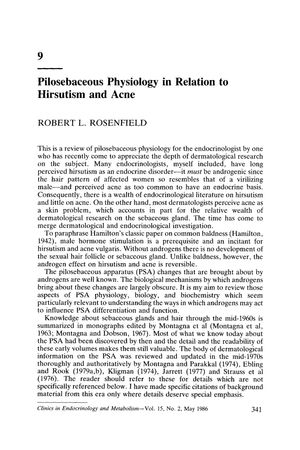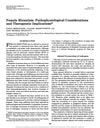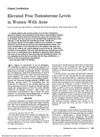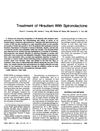9 Pilosebaceous physiology in relation to hirsutism and acne
May 1986
in “
Clinics in endocrinology and metabolism
”
androgens pilosebaceous units PSAs hair follicles sebaceous glands terminal hairs dermal cells epithelial cells growth hormone insulin-like growth factors hirsutism hyperandrogenemia acne vulgaris idiopathic hirsutism antiandrogen treatment vellus hairs androgens hair follicles sebaceous glands terminal hairs growth hormone insulin-like growth factors hirsutism acne antiandrogen treatment vellus hairs

TLDR Male hormones are important for hair and oil gland development and can cause conditions like excessive hair growth and acne.
The document from 1986 discusses the role of androgens in the development of pilosebaceous units (PSAs), which are responsible for hair and sebum production. It explains that androgens are necessary for the development of sexual hair follicles and sebaceous glands, with androgens promoting hair growth by activating genetically sensitive PSAs to produce terminal hairs. The exact mechanism of androgen action within the PSA is not fully understood, but it is suggested that androgens may act at multiple sites and require interaction between dermal and epithelial cells. Growth hormone also plays a synergistic role with androgens, possibly through insulin-like growth factors. Hirsutism, characterized by increased terminal hair growth, is often caused by hyperandrogenemia, which is responsible for the majority of moderate hirsutism cases, half of mild hirsutism cases, and about one-quarter of mild acne vulgaris cases. The term idiopathic hirsutism or acne is suggested for cases not explained by androgen excess. Variability in androgen sensitivity within the population may explain idiopathic hirsutism and cryptic hyperandrogenemia. The biological basis for this variability in PSA responsiveness to androgens is not known. Antiandrogen treatment for hirsutism results in the growth of more vellus-like hairs.


